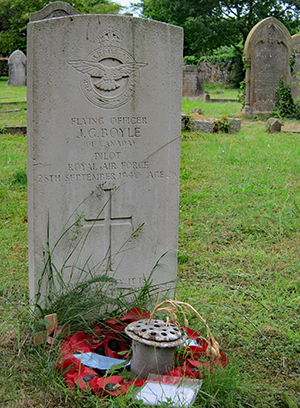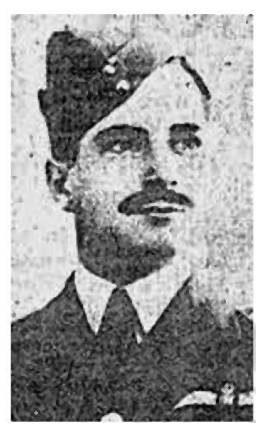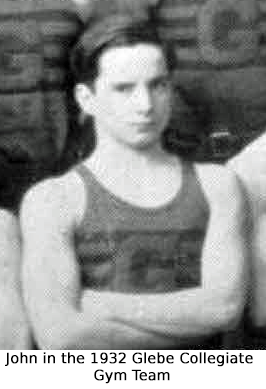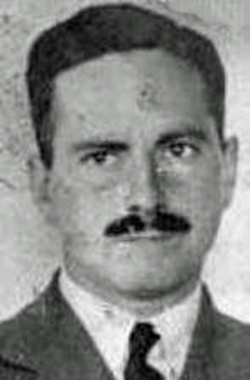Second World War - Lynsted Memorial Project
John Greer "Beryl" BOYLE (of Casselman, Ontario, Canada)
b. 27th March 1914 Pilot Officer |

"WHAT A PITY IT IS
THAT WE CAN DIE BUT ONCE
TO SAVE OUR COUNTRY"

Believed to be the flight officer, 3rd from right.
Mess setting on hearing the Declaration of War
 John Greer "Beryl" Boyle (Casselman, Ontario) was killed on 28th September 1940. Born on 27 March 1914 in Casselman, Ontario, John (known by his nickname of "Beryl") was the son of Dr William Joseph Patrick Boyle, BA, and Marie Catherine Greer Boyle, of Ottawa, Ontario. John had one older brother, William Joseph Patrick, and two younger siblings, Mary Nora Aline and Joseph Thomas. His father died in April 1924 and his mother remarried in the early 1930s to Harry D Miller.
John Greer "Beryl" Boyle (Casselman, Ontario) was killed on 28th September 1940. Born on 27 March 1914 in Casselman, Ontario, John (known by his nickname of "Beryl") was the son of Dr William Joseph Patrick Boyle, BA, and Marie Catherine Greer Boyle, of Ottawa, Ontario. John had one older brother, William Joseph Patrick, and two younger siblings, Mary Nora Aline and Joseph Thomas. His father died in April 1924 and his mother remarried in the early 1930s to Harry D Miller.
 John was educated at the Glebe Collegiate Institute in Ottawa, Ontario where he studied art and represented the college in gymnastics.
John was educated at the Glebe Collegiate Institute in Ottawa, Ontario where he studied art and represented the college in gymnastics.
On graduation John worked for the Metropolitan Life Insurance Company in Ottawa, enabling to pay for flying lessons and gaining his private pilots licence through the Ottawa Flying Club.
Around 1936, Canadians applying for RAF commissions. John resigned from his position in 1937 and travelled, at his own expense, to England along with around fifty applicants, to enlist.
John joined the RAF on a short service commission in August that year, being posted to 9 Flight Training School, Hullvington, Wiltshire on 24 October 1937. With training completed he was posted for training to No.1 Air Observers' School at North Coates, Lincolnshire on 15 August 1938. On 22 May 1940, he transferred to No 5 Officer Training Unit then to 611 Squadron based at RAF Duxford, where he was at the outbreak of war.
John saw action in defence of our escaping troops at Dunkirk between 26 May and 4 June 1940. After which he moved to 41 Squadron, Hornchurch, Essex.
On 11 August he shared in the destruction of a Junkers 88. On 5 September, twenty-two different German formations attacked within eight hours. During these raids, John destroyed a Messerschmitt 109. His combat report illustrated the intensity of the day's fighting:
"I was Green 3 ... patrolling between Maidstone and Ramsgate. Interception was made at 20,000 feet; enemy aircraft varying from 16,000 to 22,000 feet. Green Section attacked bombers [Do 17s] in line-astern formation. Seven or eight Me 109s were covering these bombers. Three Me 109s came in between me and Green 1 and 2. I attacked the most convenient e/a, starting to fire from above with quarter deflection closing in to dead-astern. A four or five-second burst was enough. The 109 broke up, with flame and smoke coming from the right-hand side; it immediately rolled on its back and spun."
 On 5 September he destroyed a Messerschmitt 109, on the 9 September a Henkel 111, on the 15 September a Messerschmitt 109, also "sharing" a Dornier 17, and on the 17 September two Messerschmitt 109's.
On 5 September he destroyed a Messerschmitt 109, on the 9 September a Henkel 111, on the 15 September a Messerschmitt 109, also "sharing" a Dornier 17, and on the 17 September two Messerschmitt 109's.
There was no let up in combat. The Luftwaffe changed tactics to smaller bomber formations and on 28 September, the Germans launched two attacks with London as the objective. John had "scrambled" from RAF Tangmere, Chichester, Sussex, in Spitfire No. X4426. During a dog fight over Charing, his aircraft was hit and sustained serious damage. At 10.37am, his Spitfire crashed in flames at Dadmans. He was killed instantly. The remains of John Boyles Identity Card bearing his signature was rescued from the burning Spitfire by local firemen.
On that day the RAF lost 16 aircraft and 9 airmen. It was indicative of their combat fatigue that they had shot down only 3 fighters.

